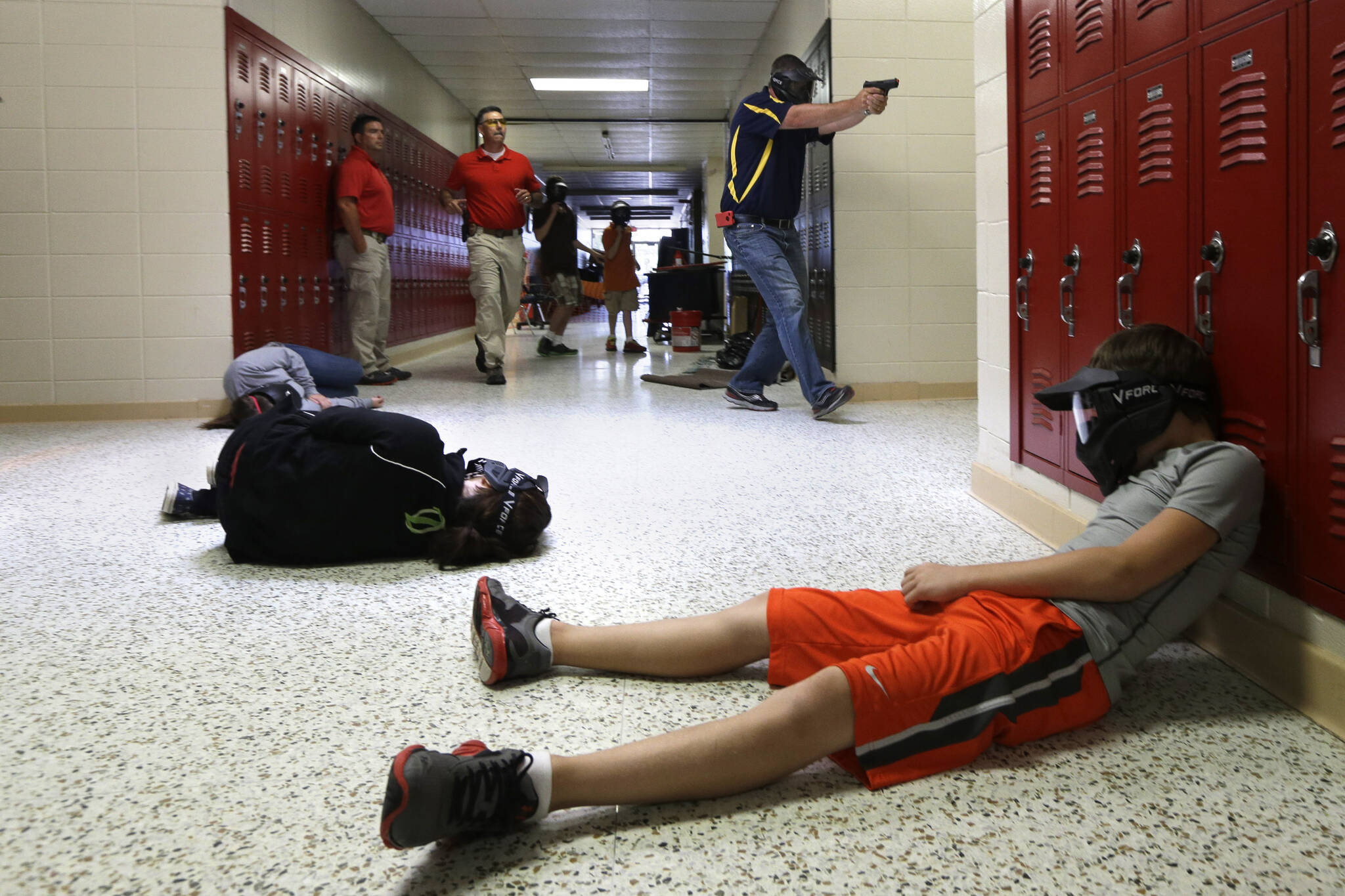Sen. Shelly Hughes (R-Palmer) thinks one trained volunteer carrying a concealed weapon in a school will effectively augment law enforcement by providing “life-saving protection for students and faculty on school grounds during an active shooter incident.” It seems she’s learned nothing from the deadly school shootings in Parkland, Florida, or Uvalde, Texas.
Or maybe she has. And the point of the proposed Safe School Act is to display her unwavering commitment to vigorously defending the Second Amendment.
The bill would require schools to assign one or more individuals the “duty to carry a concealed handgun on the person on school grounds for defensive use.” A school can’t opt out. But they don’t have to comply if no volunteers meet “the physical and mental standards the Alaska Police Standards Council (APSC) has established for the employment of police officers.”
As one Anchorage teacher who supports the bill noted, that standard of physical fitness could “be used by local school districts to disqualify and eliminate almost every applicant,” including “many teachers and staff” who “are now in their 40s, 50s or older.”
APSC also requires all police officers to be “certified by a licensed psychiatrist or psychologist…to be mentally capable of performing the essential functions of the job of police officer and is free from any emotional disorder that may adversely affect the person’s performance as a police officer.”
That’s an awfully high standard to meet too. But the lesson from Parkland and Uvalde is that both may prove to be worthless.
In 2018, Scot Peterson was the school response officer on duty when a 19-year-old man entered a Parkland high school with an AR-15 style semiautomatic weapon and murdered 17 people. It doesn’t matter if the 32-year police veteran kept himself physically and mentally prepared for the job or if the Broward County Sheriff’s Office failed to recognize he was no longer qualified. All we need to know is it was during the crisis that they all learned he wasn’t up to the challenge.
In Uvalde, where 19 elementary school children and two teachers were murdered by an 18-year-old man equipped with a similar weapon, an entire squad failed the test. More than a dozen officers responded. They attempted to confront the shooter twice, but retreated after he fired at them. Children and teachers remained trapped in the room with him for more than an hour before officers finally went inside and killed him.
Now try to imagine one qualified individual armed with a handgun finding the courage to confront a man armed with a far more powerful weapon and who is intent on committing mass murder. There may be a few, but all the training in the world can’t prepare anyone to know with any degree of certainty if they’re one of them.
Between the Columbine High School rampage in 1999 and the Parkland massacre, there were an average of 35 shootings on school property each year. It jumped to 120 during the next three years before steadily increasing to 346 in 2023. Although few were like those mentioned above, the trend should still serve as a dire warning.
According to the National Center for Health Research, multiple studies have shown “that the more media attention a shooter gets, the more likely the event will inspire a future mass shooter.” That shouldn’t be surprising. But people like Hughes never consider how defending the Second Amendment as a sacred right might corruptly influence a young person’s interest in the power of firearms.
Some parents don’t either.
Jennifer Crumbley of Michigan may be wishing she and her husband better understood their 15-year-old son’s interests. A few days after they bought him a semi-automatic handgun, he murdered four classmates in a Michigan high school. He was sentenced to life in prison. This week, she was convicted of involuntary manslaughter for failure to secure the gun. His father faces the same charge in a separate trial.
Hughes is right about one thing. It will be “an inexcusable mistake” if we wait to act “until after children have died” in a school shooting. Those of us who firmly believe that Congress can enact laws imposing reasonable limits on the possession of firearms without violating the Second Amendment have been sounding that alarm for years.
• Rich Moniak is a Juneau resident and retired civil engineer with more than 25 years of experience working in the public sector. Columns, My Turns and Letters to the Editor represent the view of the author, not the view of the Juneau Empire. Have something to say? Here’s how to submit a My Turn or letter.

